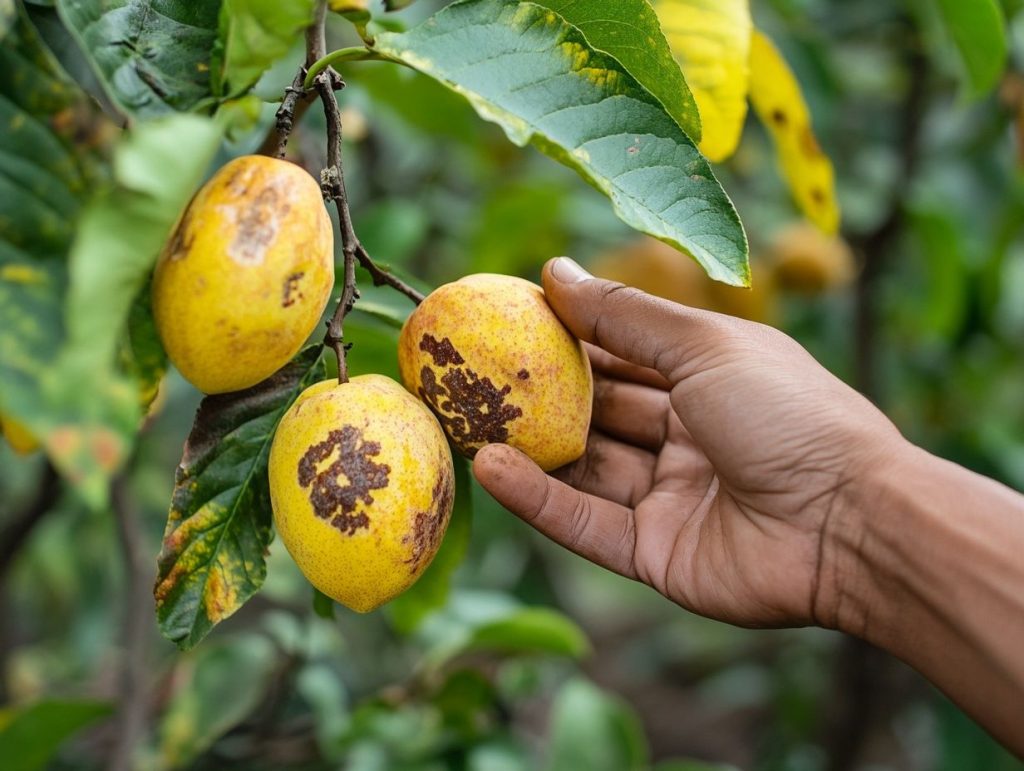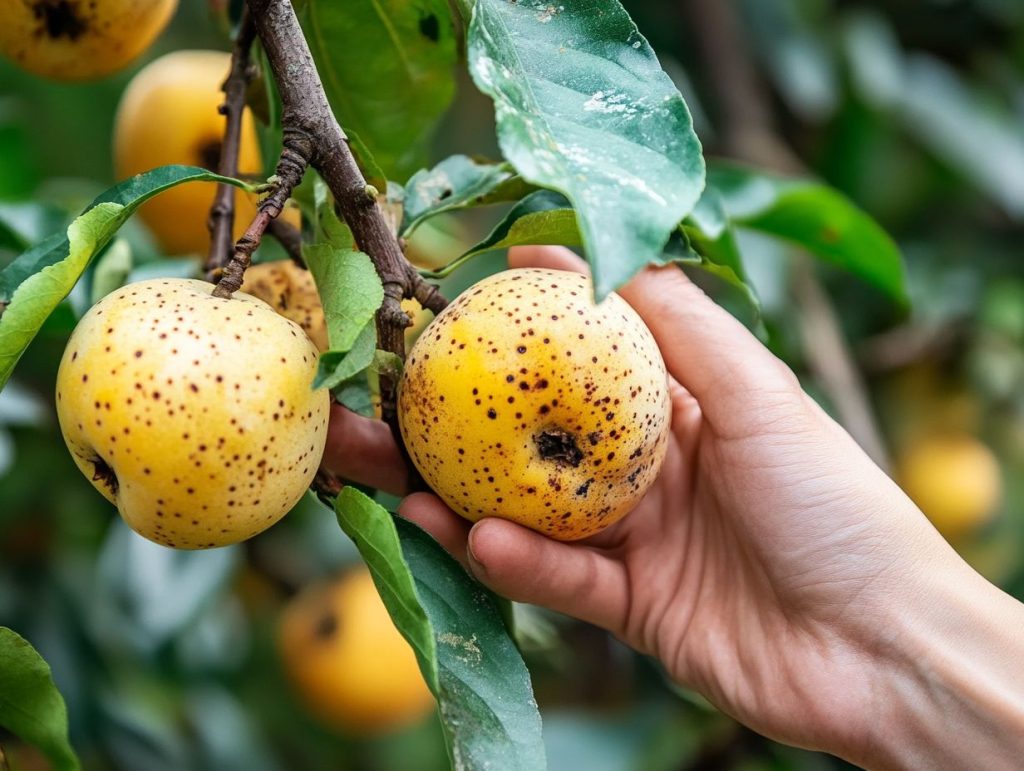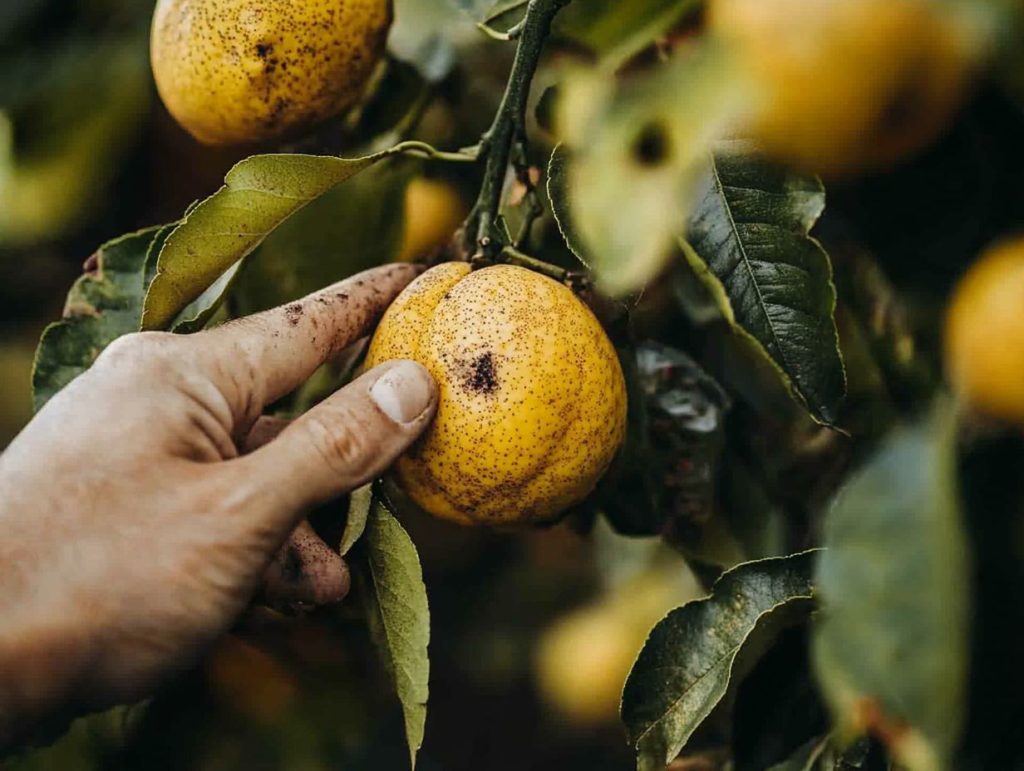Healthy fruit trees are vital for a thriving garden, but recognizing when they’re in distress can be challenging.
This article explores the key signs of a sick fruit tree, from visual indicators to changes in fruit production. Learn about common causes of tree sickness, including pests, diseases, and environmental factors. Discover when to call a tree doctor and the benefits of professional care. Find essential tips for maintaining your tree’s health and ensuring a bountiful harvest.

The Importance of Tree Health
Understanding the importance of tree health is vital to keeping your garden or orchard looking vibrant. Healthy trees make your space more enjoyable, boost biodiversity, and provide delicious fruits to savour throughout the seasons.
Regular tree care prevents problems and can lead to better fruit production, higher crop yields, and longer-lasting trees. By putting in the time and effort to maintain your trees, you can help them flourish and remain strong against pests and diseases.
Moreover, teaming up with a professional arborist can help spot issues early and implement solutions to keep trees healthy and thriving.
Signs of a Sick Fruit Tree
Recognising the signs of a sick fruit tree is essential for you to jump in and provide timely intervention and treatment. When you see symptoms like leaf discolouration, wilting leaves, or unusual growth patterns, underlying health issues could impact your tree’s overall vitality.
Bark damage is another red flag to watch—it often signals that pests or diseases are lurking around. And don’t forget about root rot; it’s a critical symptom to watch since it can severely affect your tree’s ability to absorb nutrients and water.
Knowing these signs, you can take proactive steps to restore your tree to good health.
Visual Indicators of Tree Health
Visual indicators can give crucial clues about your fruit trees’ health and well-being. For example, if you notice leaf drop and crown dieback, that’s a sign that your tree might be under some environmental stress or face health issues. Keeping a close eye on your trees can help you catch problems early so that you can treat them effectively.
Regular inspections will allow you to spot these visual cues and take timely action to boost your trees’ health and longevity.
And it doesn’t stop there—beyond leaf drops, if you see yellowing or browning leaves, that could mean your trees are dealing with nutrient deficiencies or pest infestations. Don’t forget to check the bark; unusual cracks or mould might signal fungal diseases like cankers that need immediate attention to stop them from spreading.
If you see wilting, excessive sap production, or gum exudation, those could be signs of underlying stress, possibly from infections or environmental issues like drought. By monitoring these signs regularly, you can uncover hidden threats to tree health.
With careful inspections, you’ll take a proactive approach to tree care, ensuring your orchard thrives for years.

Changes in Fruit Production
Changes in fruit production can be one of the most obvious signs that your fruit tree isn’t feeling well. If you notice a decrease in crop yield or some unusual flowering patterns, it might signal underlying issues with the tree’s health. Whether it’s due to nutrient deficiencies or the onset of diseases, spotting these changes early allows you to intervene and give your tree the care it needs. Keeping the soil healthy and adhering to good horticultural practices can help get your fruit production back on track and ensure a bountiful harvest each season.
To get a grip on these changes, you’ll want to keep an eye on not just how much fruit you’re getting but also the quality of that fruit and the tree’s overall health. Take a moment to observe leaf colour, texture, and growth patterns—these can provide valuable clues about the tree’s nutritional status and any stress factors it might face. Regular soil tests can also help you identify nutrient imbalances so you can apply the appropriate amendments to boost the tree’s resilience.
Practices such as mulching, proper pruning, and using integrated pest management strategies can all enhance crop yield. You can cultivate a thriving and productive orchard by being proactive and paying attention.
Common Causes of Tree Sickness
Identifying the common causes of tree sickness is crucial for implementing effective tree care strategies. Factors such as pest infestations, fungal infections, and various environmental stressors can contribute to a fruit tree’s decline.
Understanding these causes allows you to take preventative measures before they become bigger issues. Pests, such as bothersome insects, can wreak havoc on your trees’ health, and diseases can spread quickly if you do not manage them.
Furthermore, environmental factors such as soil conditions and seasonal changes play a critical role in the overall well-being of your trees.
Pests and Diseases
Pests and diseases are two of the biggest threats to fruit trees, so recognising them is vital to managing their health effectively. Insect pests can wreak havoc on your trees, causing stress and even leading to decline. Tree fungus loves damp environments, and if you leave it unchecked, it can compromise your trees’ health.
Luckily, you have a range of treatments at your disposal, including organic solutions that are gentle on the ecosystem while effectively tackling pests and diseases. Regularly monitoring your trees and employing pest management strategies can help keep them healthy and productive.
Among the most notorious insect pests you might encounter are aphids. You can spot them by their small size and tendency to cluster on new growth, resulting in wilting and stunted development. Spider mites are another troublemaker, often hiding on the undersides of leaves and causing that dreaded yellowing foliage.
Diseases like powdery mildew and root rot are also common. You can recognise them by their white, powdery appearance or wilting leaves; they need your immediate attention. Organic treatments like neem oil disrupt the life cycles of these pests while boosting your trees’ overall vitality.
Adopting companion planting and maintaining good tree hygiene can dramatically reduce the risk of infestations, ensuring your fruit trees thrive year after year.
Environmental Factors
Environmental factors play a significant role in the health and longevity of your fruit trees. Factors such as soil health, climate influences, and seasonal changes can considerably affect how your trees grow and the health of their roots. To help your trees thrive, you need to understand how these elements interact with them. For example, ensuring that your trees receive enough moisture through proper watering techniques helps them weather droughts, and mulching can improve soil conditions and enhance your tree care efforts.
The quality of your soil is also extremely important. By incorporating organic matter, such as compost, you can enhance nutrient availability, which leads to stronger and more productive trees. Regularly testing your soil’s pH will provide valuable insights for any necessary amendments, ensuring the best growth conditions.
Adapting your irrigation practices to match seasonal weather patterns is essential—during peak heat waves, your trees may need more frequent watering to remain vibrant. When temperatures drop, protective measures such as frost blankets can keep young trees safe from unexpected cold snaps, helping to create a healthier ecosystem for your garden.

When to Call a Tree Doctor
Knowing when to call a tree surgeon can be a game changer for fruit trees, helping you avoid irreversible damage. If you start noticing signs of disease, such as severe leaf drop or troublesome visible insects, that’s your cue to contact a professional arborist.
They will thoroughly assess your trees to uncover underlying issues and suggest the appropriate treatment options. Whether you need a tree rescue or some preventative measures, getting a tree surgeon on board ensures your trees receive the specialised care they need to thrive.
Recognising Serious Issues
Recognising serious issues in your fruit trees is crucial for keeping them healthy and productive. If you notice symptoms like bark damage or root rot, these can point to significant problems that need immediate attention. Identifying diseases quickly is key; the sooner you act, the better your chance of preventing further decline. Regular tree diagnostics will help you avoid potential threats, allowing you to implement effective treatment plans before it’s too late.
By closely observing your trees, you might catch signs like wilting leaves, unusual fruit development, or discolouration patterns—little red flags that could indicate a more serious issue lurking beneath the surface.
Taking swift action, such as consulting agricultural specialists or testing your soil, can help you confirm whether conditions such as fungal infections or pest infestations are at play. Early recognition protects your trees’ health and sets you up for a bountiful harvest.
Ultimately, a proactive approach to tree care helps build resilience against diseases, ensuring a fruitful harvest every season.
Benefits of Professional Tree Care
The benefits of professional tree care go beyond just making your garden look good; they have a real impact on the health and longevity of your trees. When you engage a professional arborist for tree maintenance, you can access comprehensive pest management solutions and care strategies tailored specifically for your trees.
With their expertise in organic solutions, these specialists can help optimise your trees’ health, which means better fruit production and greater disease resistance. Investing in professional care enhances your landscape’s beauty and supports your garden’s ecological balance.
Professional care includes regular inspections that identify issues before they become costly problems. These experts know how to implement effective pruning techniques that improve airflow and sunlight exposure—both crucial for your trees’ overall vitality.
Focusing on organic methods minimises chemical use, which helps protect beneficial insects and promotes a sustainable environment. Additionally, well-maintained trees can increase property value and reduce future maintenance costs.
Committing to expert tree care will long lead to a thriving landscape that enriches your ecosystem and community.
Maintaining Tree Health
Maintaining tree health is an ongoing process that requires your attention on several fronts. Preventative measures are key to ensuring your trees thrive through all the seasons.
Simple practices like tree pruning, proper fertilisation, and soil amendments can greatly improve trees’ health and resilience against pests and diseases.
By taking a proactive approach and regularly checking on your trees’ condition, you can create an environment where healthy growth and plenty of fruit production become the norm.
Preventive Measures and Care Tips
Preventive measures are the best way to ensure your fruit trees’ long-term health. Simple care tips, such as proper mulching and effective watering techniques, can boost your trees’ resilience against disease and environmental stress. Regular maintenance not only promotes the well-being of your trees but also prepares them for any unexpected challenges that might come their way. Knowing how to rescue trees can make all the difference in keeping your beloved plants alive when trouble strikes.
To enhance your efforts, consider using organic fertilisers to provide those essential nutrients that support growth and increase fruit production. Periodically checking your trees for pests and signs of disease can help you catch issues early, allowing for quick interventions. Pruning is another key part of the process; it shapes the tree and removes dead or diseased branches, improving air circulation and sunlight access. Installing protective barriers can also shield your young trees from wildlife damage.
By staying proactive and adopting these practical gardening techniques, you can cultivate a thriving orchard that stands strong against whatever nature throws your way.